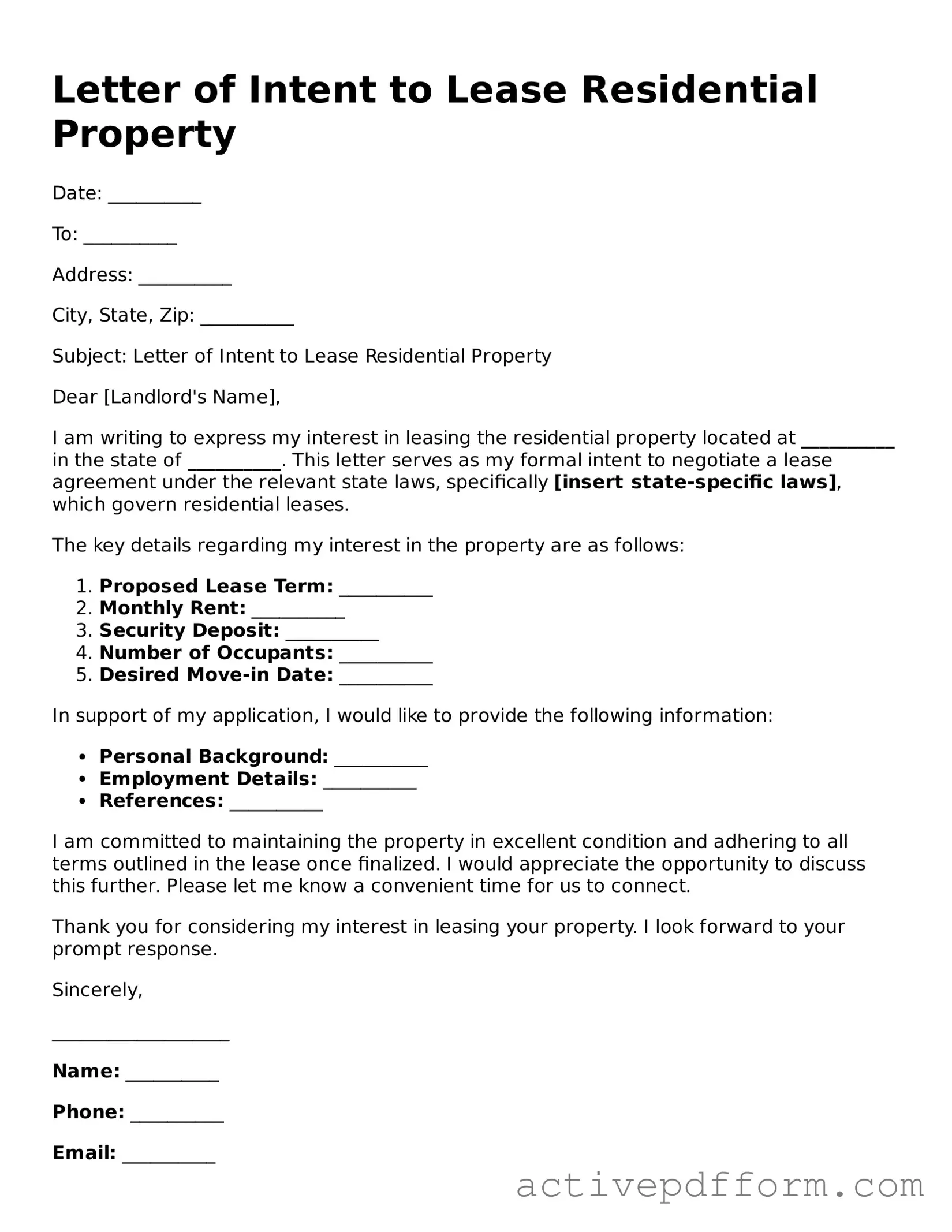Blank Letter of Intent to Lease Residential Property Document
The Letter of Intent to Lease Residential Property is a document that outlines the preliminary terms and conditions agreed upon by a prospective tenant and landlord before finalizing a lease agreement. This form serves as a formal expression of interest, detailing key aspects such as rental price, lease duration, and property specifics. Understanding this document is essential for both parties to ensure a smooth leasing process.
To get started on filling out the form, click the button below.
Access Letter of Intent to Lease Residential Property Editor Here
